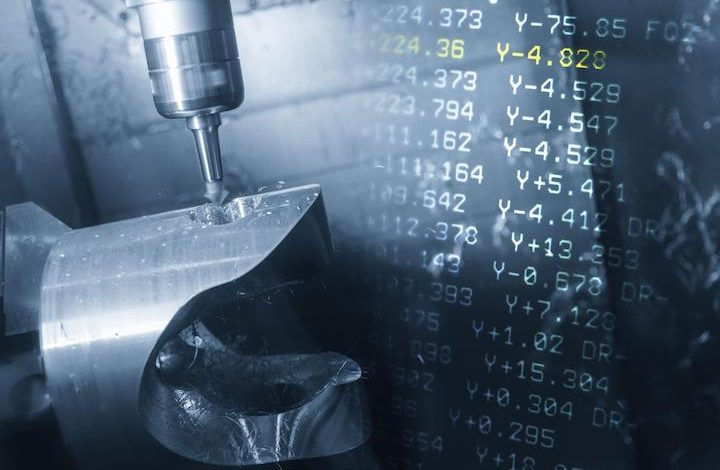Benefits and drawbacks of CNC Machining Carbon Steel

CNC (Computer Numerical Control) machining of carbon steel offers several benefits and drawbacks, depending on the specific application and requirements. Here are some of the key advantages and disadvantages:
Benefits of CNC Machining Carbon Steel:
- Precision: CNC machining allows for extremely precise and accurate shaping and cutting of carbon steel components. This is crucial for applications where tight tolerances are required.
- Repeatability: CNC machines can produce identical carbon steel parts repeatedly, ensuring consistency in manufacturing.
- Complex Geometry: CNC machining can produce intricate and complex shapes in carbon steel components that might be challenging to achieve through other methods.
- Material Versatility: Carbon steel is a widely used material in CNC machining due to its durability and availability, making it a cost-effective choice for many applications.
- Surface Finish: CNC machining can provide excellent surface finishes, which is important for applications where aesthetics or low friction are critical.
- Cost-Effective for Mass Production: CNC machining can be cost-effective for high-volume production runs due to its efficiency and automation.
Drawbacks of CNC Machining Carbon Steel:
- Tool Wear: Carbon steel is a hard material, which can lead to increased tool wear. Frequent tool changes or the use of specialized, wear-resistant tooling may be required, adding to production costs.
- Heat Generation: Machining carbon steel can generate heat, potentially affecting the material’s properties and causing thermal distortion. Proper cooling and lubrication are necessary to mitigate this issue.
- Slower Machining Speed: Compared to softer materials, machining carbon steel can be slower, as it requires reduced cutting speeds to avoid overheating and maintain tool life.
- Environmental Concerns: Machining carbon steel can produce metal shavings and generate coolant waste, which may have environmental implications and necessitate proper disposal methods.
- Skill and Knowledge Required: CNC machining of carbon steel demands skilled operators who are familiar with the material’s characteristics and the nuances of machining it effectively.
- b Setting up CNC machines for carbon steel machining can involve time-consuming programming and tooling setup, which may not be cost-effective for small-batch production.
In summary, CNC machining of carbon steel offers high precision and repeatability, making it suitable for many applications. However, it also comes with challenges such as tool wear, heat generation, and the need for skilled operators. The suitability of CNC machining for carbon steel depends on the specific project requirements and the trade-offs between its benefits and drawbacks.
Alloy Steel vs. Carbon Steel
Alloy steel and carbon steel are two distinct types of steel with different properties and compositions. The primary difference between them lies in the additional elements, or alloys, that are added to the base iron and carbon.
-
Carbon Steel:
- Composition: Carbon steel is primarily made up of iron and carbon, with a small amount of other elements like manganese, sulfur, phosphorus, and silicon. The carbon content typically ranges from 0.05% to 2.0%.
- Properties: Carbon steel is known for its strength and hardness. It has good tensile and impact strength but is relatively brittle compared to other types of steel.
- Uses: Carbon steel is widely used in a variety of applications, including construction, automotive, machinery, and tools. It’s commonly used in structural components and as a base material for various alloys.
-
Alloy Steel:
- Composition: Alloy steel is a mixture of iron and a variety of alloying elements. These alloying elements can include metals such as chromium, nickel, molybdenum, vanadium, and others. The specific alloying elements and their proportions are tailored to achieve the desired properties.
- Properties: Alloy steel is known for its enhanced properties, which can include increased strength, hardness, corrosion resistance, and wear resistance, depending on the alloying elements used. Alloy steels can be tailored for specific applications.
- Uses: Alloy steel is commonly used in applications that require specific performance characteristics. For example, stainless steel is an alloy of iron, chromium, and nickel, known for its corrosion resistance. High-strength alloy steels are used in aerospace and automotive applications. Tool steel is another type of alloy steel used for making cutting tools.
In summary, the main difference between alloy steel and carbon steel is the addition of alloying elements in varying proportions. These alloying elements give alloy steel its unique properties, making it suitable for a wide range of applications where specific performance characteristics are required. Carbon steel, on the other hand, is simpler in composition and is primarily used for its strength and hardness, especially in applications where the specific properties of alloy steel are not necessary.




